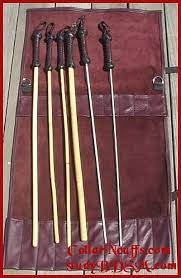MAKING YOUR OWN CANES FOR FEMDOM PLAY

Canes have a sweet, sharp bite and are one of the most intense striking toys in BDSM Femdom. But most people would be surprised how easy and inexpensive they are to make. Here's our process for making rattan canes. Although many people think they are made out of bamboo, most BDSM folk use canes made from rattan. Bamboo can split into sharp splinters. Rattan is a reed that grows in China and Indonesia. It is relatively easy to find, because it is used to make furniture. Check your local Yellow Pages for furniture-making or caning supply stores. If you don't have any nearby, you can order rattan over the Internet as well





